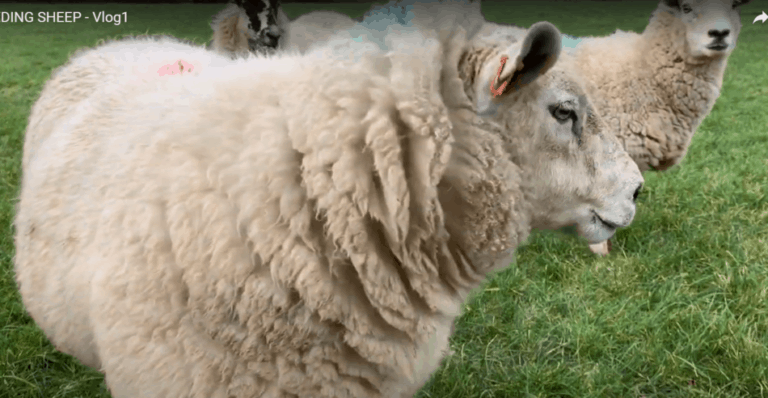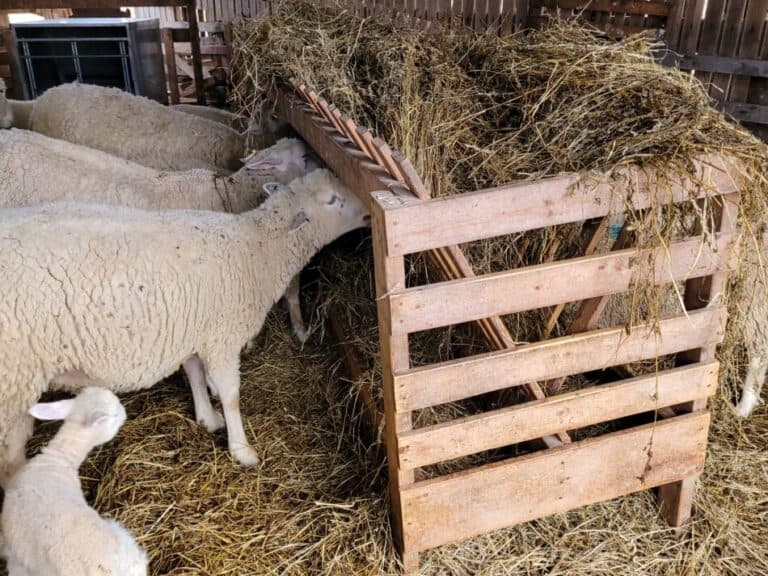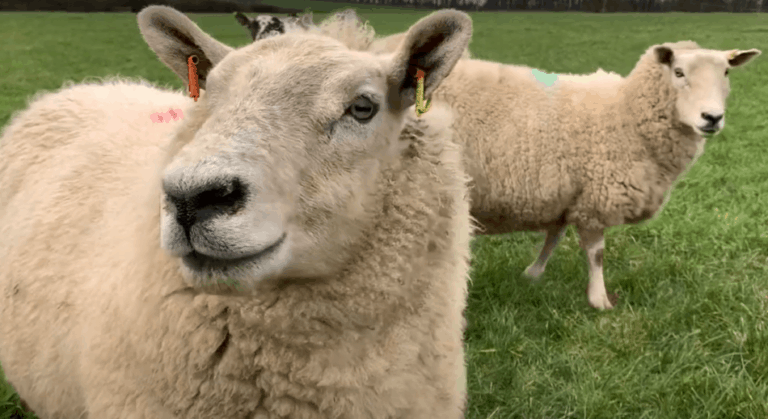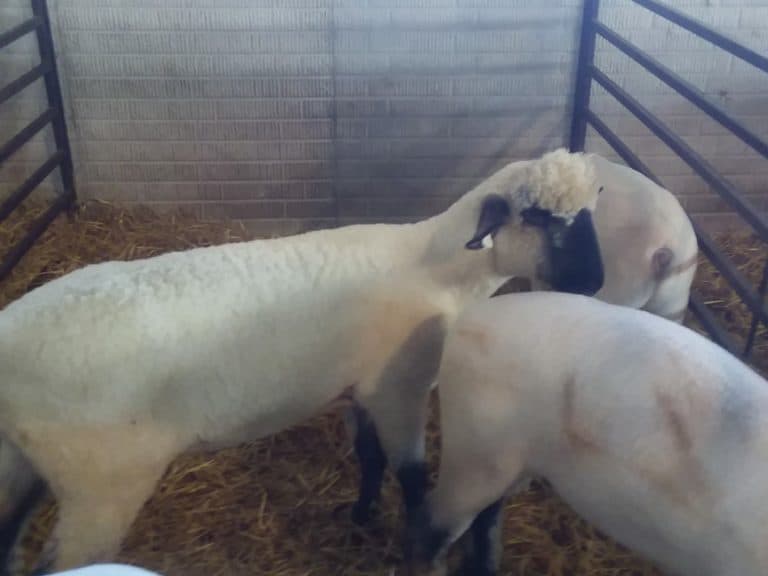5 Reasons Why Sheep Follow Each Other

Sheep seem to always be in a group and following each other around. What are they doing? Why do sheep insist on staying in the group, don’t they want to do a few things by themselves?
Sheep follow each other because they instinctively want to be in a group with other sheep. A lone sheep is in danger of predation, whereas, in a group, sheep have protection and companionship.
11 Breeds Of Sheep With Black Faces shows you a few of the breeds of sheep from around the world that are not all white, like you usually see!
Sheep follow each other because of instinct
All sheep have the instinct to stay with other sheep, to be part of the flock. For sheep, being in the flock is their best chance of staying safe.
A sheep alone is vulnerable, a sheep that gets lost or can’t keep up with the flock will be an easy target for predators.
A flock has advantages over a single sheep
In the flock, there are advantages that a single sheep does not have:
- feeling of security to be with other sheep
- ability to see everywhere at once
- the outside layer of sheep forms a windbreak for the rest of the group
- confusion of predators
Granted, there are some downsides of the flock, like competition for food and water (if either is scarce), but overall sheep benefit more from being in the flock and following each other.
Being with the flock helps sheep to feel secure
We might think of always being in a large group all day and all night as “too much”, I know that’s not my idea of a great way to spend the day!
But for sheep, being in the group is a primary concern. The flock gives them security, which is seemingly their top priority and the foundation of the rest of their life choices.
If you think about it, sheep could hang out by themselves, they don’t have to be with their flock all of the time.
Even if the sheep are all in the barn, one could choose to hang out by herself in the corner, but she doesn’t. That’s not what makes her happy. They choose to be with their flock, even when they have other options.
Sheep run from danger as a group
The second safety related reason for sheep moving together is they are fleeing from something that scares them.
When something, real or more of a “just saw something that’s off”, is noticed by one of the flock, the whole group will flee. The danger could be real, like a predator or something that is more confusing, like trash blowing across the field.
Either way, sheep will run first and consider how big of a deal the presumed danger really is when they are a safe distance away.
Sheep follow each other to find food
Sheep follow each other is to find food or water. When one sheep finds a good plant to eat or figures out a way to get out of the fence and into the next pasture, all the other sheep want some of that new grass, too!
When one or two sheep get out of their pasture and into somewhere that has plants they like, the rest of the flock is hoping to join the escapees. This is just like if you give one kid some candy, the other kids all want some candy, too.
Sheep will come to the shepherd when they learn s/he is bringing them food
We feed our sheep in the winter, since we live in Ohio and do not have year round grass growth. The sheep catch on to this really quickly, since they learn to associate the tractor coming out to the field with them getting fed.
When my husband takes hay out to the flock, they will follow him as the hay rolls out. You’ll see a long line of sheep trailing out after the tractor then all lined up eating the hay off of the frosty grass.
Sheep follow each other to play
Occasionally you can see lambs just take off running around the pasture. All of the lambs are in a big group and they zip around the pasture, like they are running their own little Daytona 500!
It’s really fun to see! Usually it’s just the lambs that are a bit older that do the running around, the youngest lambs seem to be too little to think of this as fun, but, as the newer lambs grow, they’ll join in the race, as well.
I have seen a few videos that call this lamb race a “lambpede”! So far, I have not been able to video our lambs running around like this, but I remain hopeful. Eventually, I’ll be out there with my camera when they are racing around!
Sheep follow each other around for breeding
Sometimes you’ll see a few of the sheep in the flock following each other around, with the majority of the group standing around chewing their cuds or eating. The moving sheep can be either ewes or rams.
Small groups of sheep will follow each other around quite a bit during breeding season. Rams will go around and seek out ewes that are in heat (ready to be bred), while the in heat ewes are seeking the rams at the same time.
Depending upon which group you are watching, the main flock just hanging out and eating, or the rams and ewes breeding you’ll see some sheep doing quite a bit of roaming around and other sheep on the sidelines.
If the entire flock is going somewhere, they are looking for food, water or a better place to lay down. If small groups of sheep within the main group are following each other, chances are this is breeding related.
Sheep are repetitive in their daily behavior
The fourth reason you may see sheep following each other around is that sheep are very repetitive in their daily behavior, almost cyclical.
What I mean by this is sheep that are out on pasture seem to have a route that they run every day.
At certain times you can find them in one section, then at night they are all bedded down in a different section. They seem to have specific areas that they want to check each day and, seemingly, at similar times.
For instance, at dusk or a little before, all of a sudden you’ll start to hear a lot of lambs and ewes crying to each other but when you look at the group, nothing is wrong. What are they doing that has them loudly talking back and forth?
They are getting ready to go lay down for the night and all that baaing is for the lambs, which are usually a bit more adventurous at this time, to be able to find their moms. They like to sleep together, ewes with lambs, all with the flock.
If you would like to learn more about why sheep do the things they do, read Social Behavior of Sheep in the Merck Manual. This is more of a textbook style article that is very interesting reading and will give you more details.





